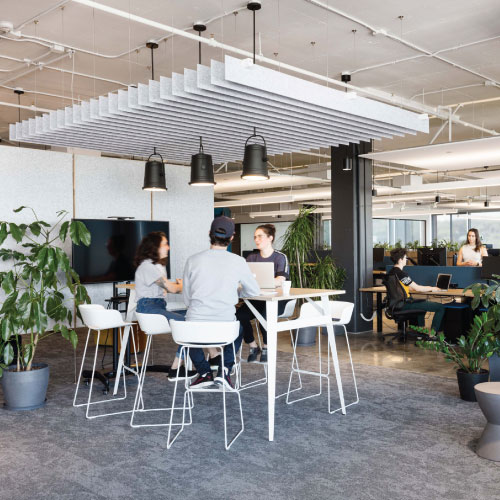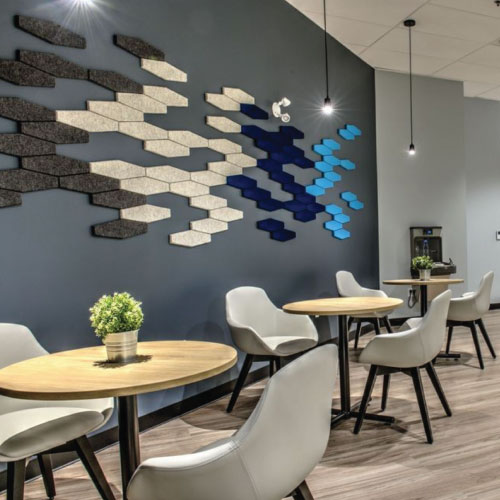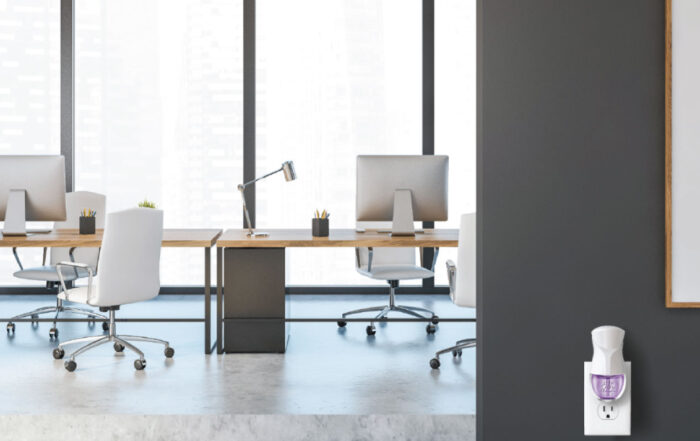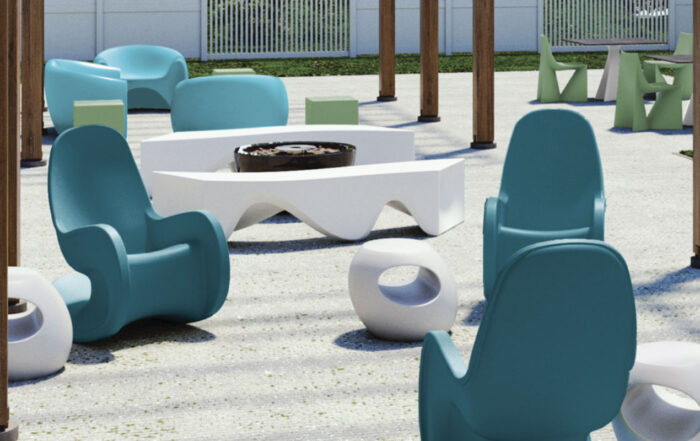ACOUSTICS IN THE OFFICE
Acoustics play a crucial role in the workplace, affecting the comfort and productivity of employees. Inadequate acoustics can cause distractions, reduce concentration, and increase stress levels. On the other hand, good acoustics can improve communication, foster collaboration, and enhance overall job satisfaction.
In today’s modern workplace, we’re surrounded by the constant hum of technology, phone calls, and conversations. Offices have become more open-concept, with fewer walls and more hard surfaces, creating an essential need for good acoustics. Poor acoustics can lead to a range of problems, from reduced productivity and increased stress levels to employee dissatisfaction and decreased job satisfaction. Keep reading to explore the importance of acoustic design in the office and provide tips on how to create a comfortable and effective acoustic environment.
THE BENEFITS OF GOOD ACOUSTICS

Increased Productivity
Good acoustics can minimize distractions and reduce noise levels, allowing employees to concentrate better and be more productive. In fact, according to Haworth, 70% of workers feel more productive in a less noisy environment with 50% of employers citing workplace noise to be a major interference on productivity.

Improved Communication
Clear and effective communication is key in any workplace, and good acoustics can facilitate this by reducing noise and echoing. Acoustics makes it easier for people to hear and understand each other, whether in an open-plan office, classroom or lecture hall.

Enhanced Collaboration
In an acoustically optimized workplace, team members can work together more effectively and share ideas more freely. When designing for sound, it is important to remember that all sound isn’t bad; collaboration and teams can inspire creativity. Considering areas of space to meet, leaving some spaces where noise is encouraged is important as well.

Reduced Stress
Sound is fundamentally important for our health and well-being. Loud and cluttered acoustics can increase stress levels, leading to burnout and decreased job satisfaction. Good acoustics, on the other hand, can create a more relaxed and calming environment. Lower noise reduces employees’ stress levels, having a direct impact on their health and wellbeing.
DESIGNING ROOMS FOR ACOUSTICS
Designing a room with acoustics in mind is crucial for creating a comfortable and functional space. Poor acoustics can lead to sound distortion, echoes, and a lack of clarity, making it difficult to communicate effectively or enjoy audiovisual content. Proper acoustic design takes into account factors such as room dimensions, surface materials, and sound-absorbing materials, to create a balanced and pleasant sound environment. Whether it’s a home office, school library, or conference room, investing in proper acoustic design can enhance the quality and enjoyment of the space.



The recommended background noise level in an office is 40 dB. Any higher and you’re asking for disgruntled employees. Noise frequency is measured in decibels (dB), and as unpredictable sounds (e.g. audible speech, printers, coffee machines, air conditioning) sit higher in the frequency chart than the recommended levels, they create significant noise pollution in the workplace. Here are a few ways you can reduce unwanted noise levels in your space.
WAYS TO IMPROVE ACOUSTICS IN THE OFFICE
SOFT PANELS & SCREENS
Furniture can affect acoustic properties either positively or negatively. Hard surfaces reflect sound and things like glass-topped tables amplify sound. Soft surfaces absorb sound. You can use fabric covered soft panels or screens (free standing or placed between desks).
FURNITURE PLACEMENT
The arrangement of furniture in your office can have a significant impact on acoustics. Avoid placing furniture against walls, as this can amplify echoing, and opt for soft, upholstered pieces to absorb sound.
CARPETS & RUGS
Soft floor coverings can absorb sound, reducing noise levels and improving the acoustics of your office.
SOUND MASKING
If you already designed your open office space, think of improving the work environment using sound masking. Sound masking devices help by slightly raising the background sound level of a building. It makes it hard for employees to get distracted by conversations from coworkers.
CEILING
Sound insulation is important when selecting your ceiling; make sure you don’t compromise the ceiling performance when putting speakers, lighting fixtures, ventilation, ducting grilles, etc. In some cases, you may need to add ducting dampers, and acoustic hoods to maintain the quality of insulation.
WALL & CEILING PANELS
Acoustic panels are an effective way to absorb noise and reduce echoing. They can be installed on walls and ceilings, and come in a variety of colors and designs to match your office decor
QUALITY AUDIO EQUIPMENT
Poor-quality audio equipment can result in unclear communication and added stress. Investing in quality microphones, speakers, and headsets can improve the sound quality in your office and enhance communication.
ACOUSTIC LIGHTING
Combine noise absorption with acoustic lighting without taking much space or interrupting it physically. Acoustic lighting hangs elegantly and improves flexibility, productivity, and overall happiness. Good sound absorbing light will balance light and ambiance while offering comfort, tranquility, and space.
BIOPHILIA
Green walls provide better acoustic absorption than conventional building materials. Plants diffuse and deflect sound, but only if you spread them evenly in the available space, use green modular walls tested for effective acoustic properties and use large plant containers that can accommodate more compost and top dressing.











